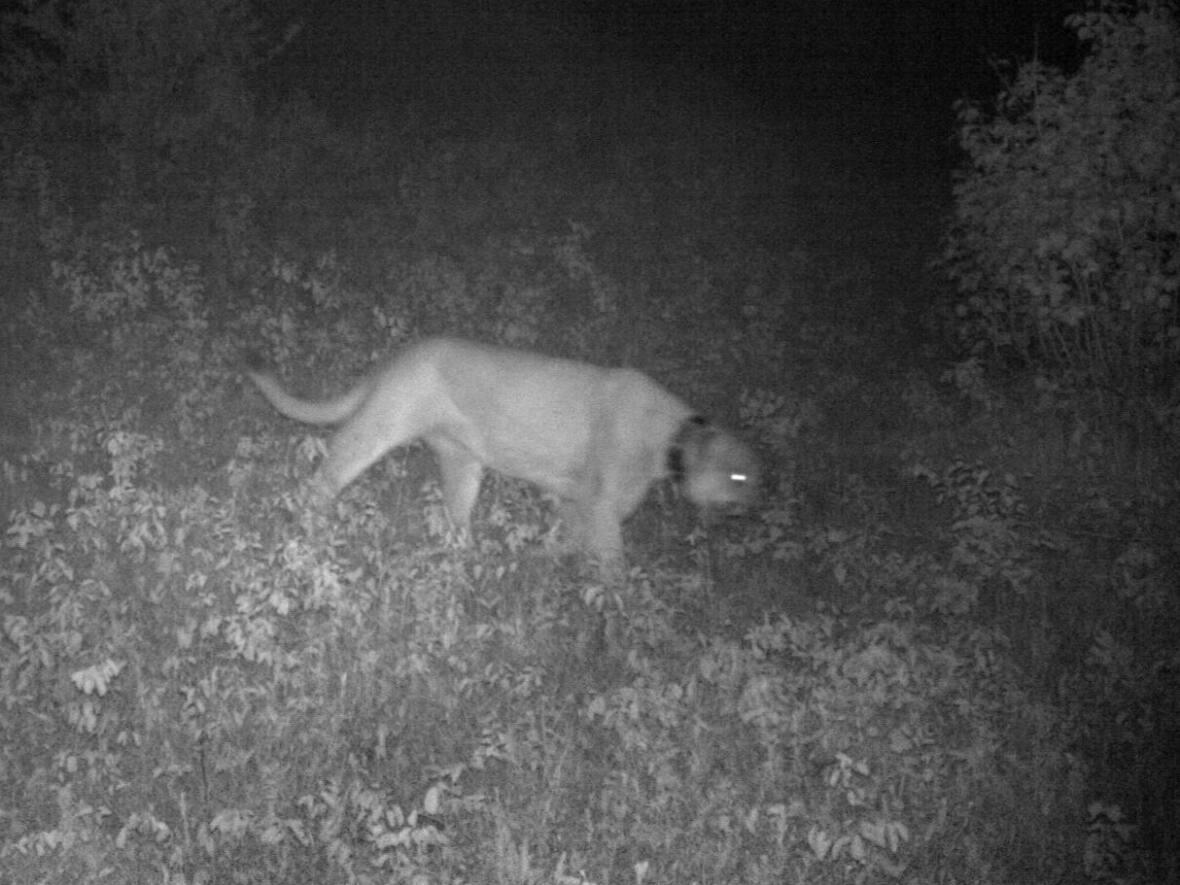Cougars moving into Manitoba slowly but surely, zoologist says

As cougar sightings become more common in Manitoba, a Manitoba zoologist says it's important to learn to coexist with the animals.
For about a hundred years, the cougar population in Manitoba plummeted, but is now believed to be on the rise.
2020 was a banner year for sightings, and there were six confirmed sightings in 2021.
"I know for a very long time Manitoba was without cougars, but it really does appear that populations to the west and to the south are increasing and dispersing. Animals are moving into Manitoba," Bill Watkins, a biodiversity conservation zoologist with Manitoba's wildlife and fisheries branch, said in an interview with Stephanie Cram on CBC Manitoba's Weekend Morning Show.
In 2020, a cougar that had been tagged was found dead in Duck Mountain Provincial Park. From the tag, scientists learned that it had travelled from Cypress Hills in Alberta.
That was a unique case, Watkins said, as it's rare for local scientists to get that amount of information.
Watkins isn't sure where the cats that have been seen in Manitoba are from, but can make some educated guesses based on past visitors.
"What we found in the past is that animals north of Riding Mountain, when we've done DNA analysis, seem to be coming from the west and animals south of Riding Mountain, when we've been able to do DNA analysis, seem to be coming from the south, from North Dakota and South Dakota," he said.
Cougars are the second-largest cat in North America, at nearly three metres long from nose to tail and about a metre high at the shoulder, Watkins said.
They mostly eat deer, but sometimes go for species like elk, or smaller animals like beavers and porcupines if they're unsuccessful in hunting deer, he said.
What if you see one?
If you are among the few to spot a cougar in Manitoba, chances are the sighting will be over in a split second.
"Ninety-nine point ninety-nine per cent of the observations that are reported to us are: the cougar sees the person and disappears into the bush. Most sightings take place over less than a second, and the animal is gone," he said.
If you are one of the rare ones to have a longer encounter, Watkins suggests moving away slowly and carefully to house or a car.
"Make yourself look big if the animal looks like it's going to approach, you'll throw stones, rocks, things like that — sticks. All the while moving away to a safe place," he said.
Do not run because the cats are ambush hunters.
"Keep your eye on the animal. They tend not to attack if they know they're being observed," Watkins said.
There has never been a cougar attack on a human in Manitoba, and that can continue if people use common sense around the animals.
"We just have to coexist," Watkins said.


